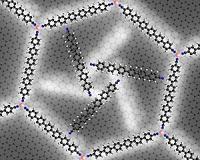 |
Columbia MO (SPX) Dec 01, 2010 Gold nanoparticles, tiny pieces of gold so small that they can't be seen by the naked eye, are used in electronics, healthcare products and as pharmaceuticals to fight cancer. Despite their positive uses, the process to make the nanoparticles requires dangerous and extremely toxic chemicals. While the nanotechnology industry is expected to produce large quantities of nanoparticles in the near future, researchers have been worried about the environmental impact of the global nanotechnological revolution. Now, a study by a University of Missouri research team, led by MU scientist Kattesh Katti, curators' professor of radiology and physics in the School of Medicine and the College of Arts and Science, senior research scientist at the University of Missouri Research Reactor and director of the Cancer Nanotechnology Platform, has found a method that could replace nearly all of the toxic chemicals required to make gold nanoparticles. The missing ingredient can be found in nearly every kitchen's spice cabinet - cinnamon. The usual method of creating gold nanoparticles utilizes harmful chemicals and acids that are not environmentally safe and contain toxic impurities. In the MU study, Katti and researchers Raghuraman Kannan, the Michael J and Sharon R. Bukstein Distinguished Faculty Scholar in Cancer Research, assistant professor of radiology and director of the Nanoparticle Production Core Facility; and Nripen Chanda, a research associate scientist, mixed gold salts with cinnamon and stirred the mixture in water to synthesize gold nanoparticles. The new process uses no electricity and utilizes no toxic agents. "The procedure we have developed is non-toxic," Kannan said. "No chemicals are used in the generation of gold nanoparticles, except gold salts. It is a true 'green' process." "From our work in green nanotechnology, it is clear that cinnamon - and other species such as herbs, leaves and seeds - will serve as a reservoir of phytochemicals and has the capability to convert metals into nanoparticles," Katti said. "Therefore, our approach to 'green' nanotechnology creates a renaissance symbolizing the indispensable role of Mother Nature in all future nanotechnological developments." During the study, the researchers found that active chemicals in cinnamon are released when the nanoparticles are created. When these chemicals, known as phytochemicals, are combined with the gold nanoparticles, they can be used for cancer treatment. The phytochemicals can enter into cancer cells and assist in the destruction or imaging of cancer cells, Katti said. "Our gold nanoparticles are not only ecologically and biologically benign, they also are biologically active against cancer cells," Katti said. As the list of applications for nanotechnology grows in areas such as electronics, healthcare products and pharmaceuticals, the ecological implications of nanotechnology also grow. When considering the entire process from development to shipping to storage, creating gold nanoparticles with the current process can be incredibly harmful to the environment, Chanda said. "On one hand, you are trying to create a new, useful technology. However, continuing to ignore the environmental effects is detrimental to the progress," Kannan said. Katti, who is considered to be father of green nanotechnology, and Nobel prize winner Norman Borlaug have shared similar views on the potential of green nanotechnology in medicine, agricultural and life sciences. Borlaug predicted a connection between medical and agricultural sciences. Katti, who is the editor of The International Journal of Green Nanotechnology, said that as more uses for nanotechnology are created, scientists must develop ways to establish the connection between nanotechnology and green science. The study was published this fall in Pharmaceutical Research.
Share This Article With Planet Earth
Related Links University of Missouri-Columbia Nano Technology News From SpaceMart.com Computer Chip Architecture, Technology and Manufacture
 Self-Assembly Of Nano-Rotors
Self-Assembly Of Nano-RotorsMunich, Germany (SPX) Nov 26, 2010 In the nanoworld many things are different. Scientists only recently started unveiling and harnessing the underlying laws and principles. A team associated with Professor Johannes Barth from the Physics Department of the TU Muenchen have now succeeded in capturing rod-shaped molecules in a two-dimensional network in such a way that they autonomously form small rotors that turn in their honeycomb ... read more |
|
| The content herein, unless otherwise known to be public domain, are Copyright 1995-2010 - SpaceDaily. AFP and UPI Wire Stories are copyright Agence France-Presse and United Press International. ESA Portal Reports are copyright European Space Agency. All NASA sourced material is public domain. Additional copyrights may apply in whole or part to other bona fide parties. Advertising does not imply endorsement,agreement or approval of any opinions, statements or information provided by SpaceDaily on any Web page published or hosted by SpaceDaily. Privacy Statement |